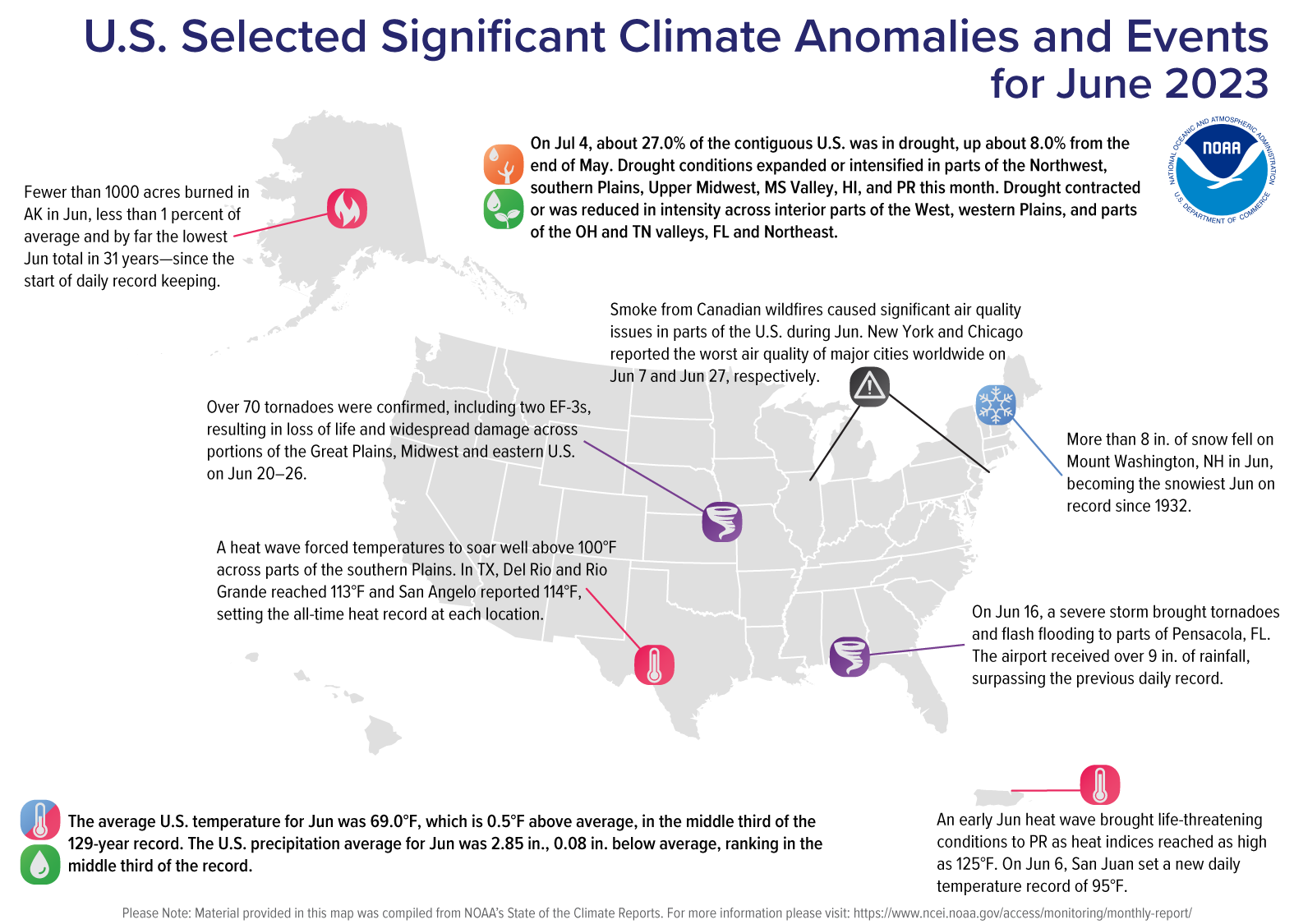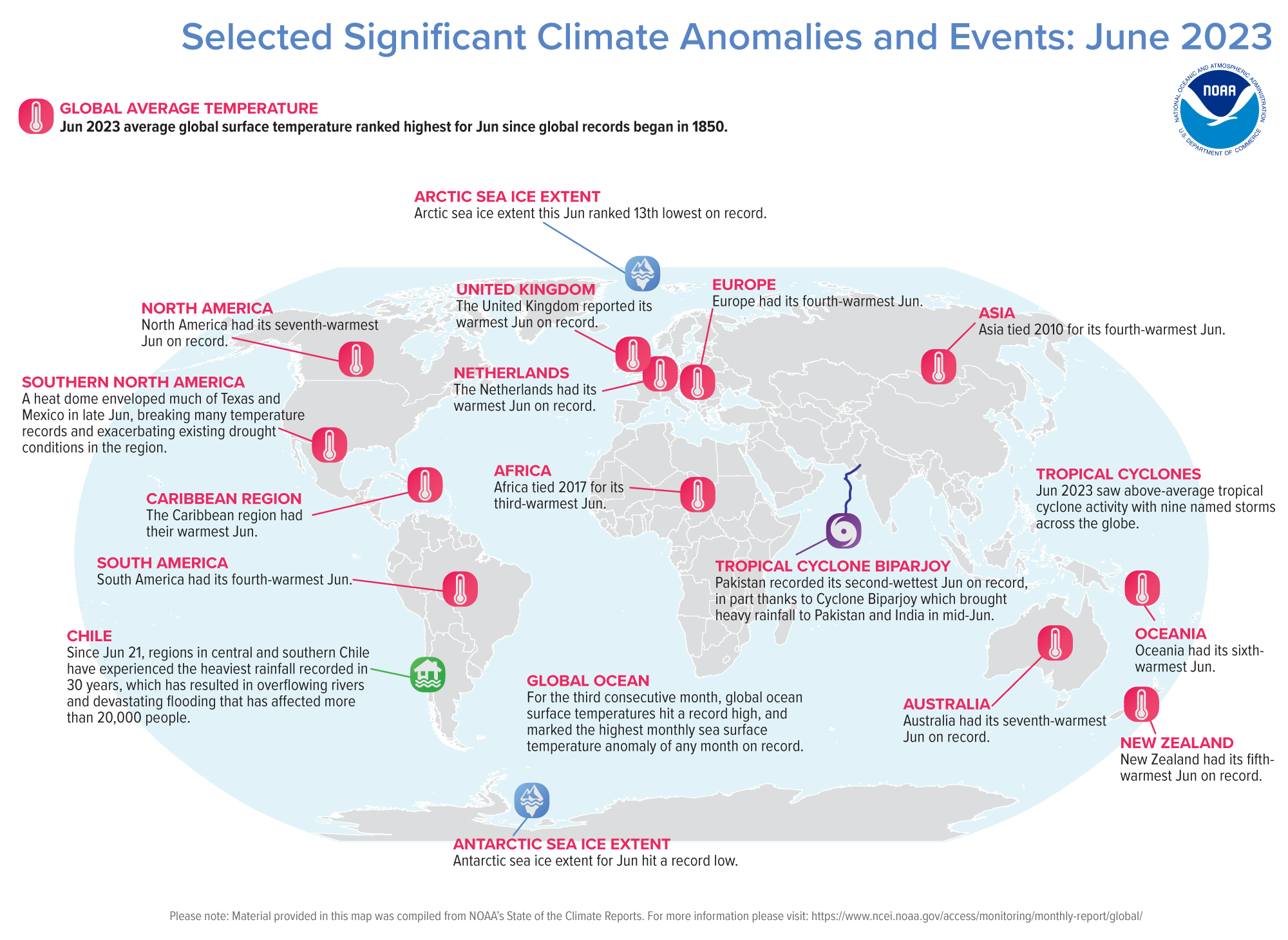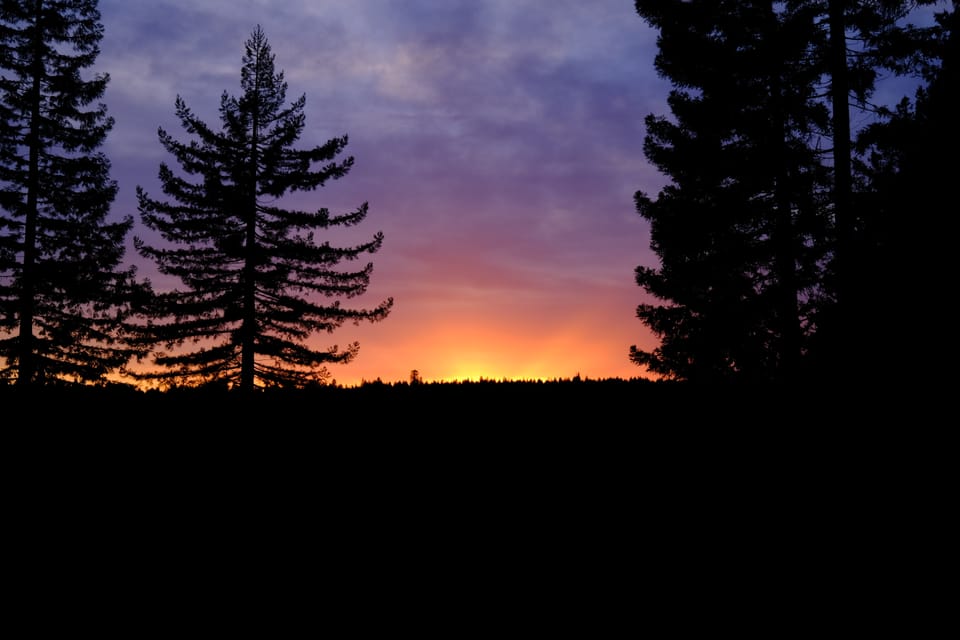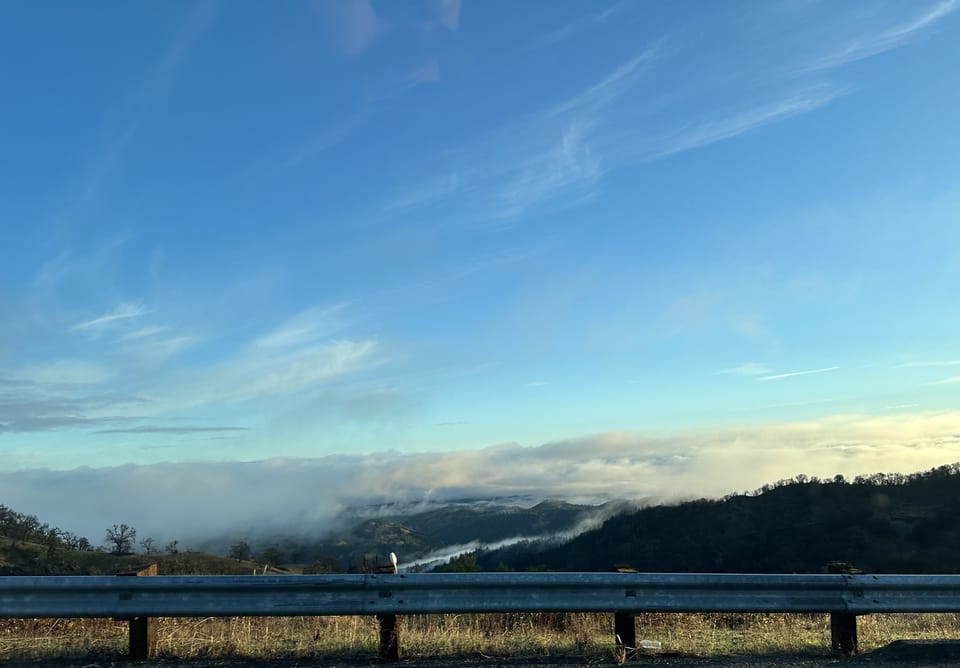Pass the ice
In which we clarify a few things and knock one out of the park.

Tis the season
Since we’re getting more into the middle of summer, I thought I’d share my Weather and Wildfire Dashboard again. Those of you outside California probably won’t find it super helpful but feel free to take a look. It’s a free web app (not mobile friendly though technically it’ll work), so feel free to share it with others.
I won’t harp on this too much
But it’s worth mentioning. Heat related deaths are a real weather risk. Deaths related to tornadoes and hurricanes often end up in the news more, but heat related deaths often kill more people. Please take care of yourself and others (including pets) during these hot times.
And while we’re talking about the heat, last week set a record (WMO post, Berkeley Earth post). And if you’ve heard something along the lines of “but no one experiences the average global temperature“ or that “there’s no such thing as the global temperature“, feel free to share this link.
Yeah, that’s outta here
Baseball is our sport of choice at the Weather Feed, so we thought this article about home runs in baseball was pretty interesting.
For every 1 degree Celsius (1.8 degree Fahrenheit) increase in temperature, the number of home runs in a game increases by 1.96 percent, according to a study published in April that analyzed home run and weather data from more than 100,000 MLB games between 1962 and 2019. The study found that more than 500 home runs since 2010 can be linked to climate warming, and that the phenomenon could account for an additional 130 to 467 home runs per year by the end of the century, depending on how much the planet warms.
This isn’t the first I’ve heard of this, but it looks like they’ve made more progress on the research side.
The Weather Feed is a reader-supported publication. To receive new posts and support my work, consider subscribing or sharing with a friend!
Just to clarify
There’s been some confusion on what a “thousand-year storm” means. Luckily, there’s a full article that explains this on Climate.gov.
If you want the short version, a thousand-year storm doesn’t mean a storm can only happen once in a thousand years. It means that in any given year, there’s a 1 in 1,000 chance of it happening, and that chance resets every year.
And while we’re on the subject of rain, here are some totals from the storms out east (totals ending on July 11).

Hey, I know what that one is!
We’ve covered the marine layer a couple times (once, twice), but NWS Bay Area wrote a thread recently about it too. If you’re in or around SF, the thread might be worth a read. It talks a bit about how the marine layer makes forecasting challenging at times.
Cya June!
The U.S. June Climate Report is out. As usual, the article lists some key points upfront and then goes into a deeper dive.

And we’ve got the Global Climate Report for June too. There were… kind of a lot of highlights.

California dreamin’ heatwavin’
You probably know it’s coming already but here are a few articles that talk about the incoming heatwave.
Honorable mentions
- Buncha hoo-haa around seeing the Northern Lights (the Associated Press eventually made a correction)
- SF Chronicle article about how Twitter and emergency response are intertwined
- Climate.gov article about how global temperature rankings are made
- There is a greater than 90% chance that El Niño will continue through the Northern Hemisphere winter
The Draxcast
We asked Drax for a forecast but he wasn’t quite prepared. We’ll try again next time.

See you on the other side
Have a great weekend!



